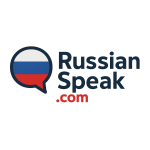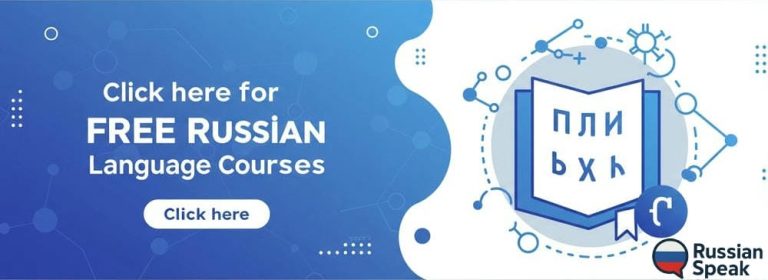Table of Contents
ToggleFactors Influencing Language Learning Time

While the desire to learn Russian may be strong, various factors greatly influence the time required for proficiency. Key motivation factors include the learner’s personal goals, which dictate the intensity and focus of their studies.
For instance, individuals aiming for conversational fluency may invest less time compared to those pursuing academic or professional mastery. Additionally, prior exposure to similar languages can accelerate the learning process.
The learner’s environment also plays a vital role; immersion in a Russian-speaking community often fosters quicker assimilation of skills. Moreover, the availability of resources, such as courses, tutors, and technology, can considerably affect progress.
Ultimately, a combination of motivation, goals, and external circumstances shapes the unique timeline for each learner’s journey in mastering Russian.
Comparing Russian to Other Languages
The time required to learn Russian can be further understood by comparing it to other languages.
Russian, utilizing the Cyrillic alphabet, presents unique challenges for learners accustomed to Latin scripts. Its complex grammar, including cases and aspects, differs greatly from languages like Spanish or Italian, which are rooted in the same language family.
Additionally, Russian’s language roots are Slavic, making it distinct from Germanic or Romance languages. These differences can influence the learning curve, often requiring more time for mastery compared to languages perceived as ‘easier’ for English speakers.
Ultimately, understanding these comparative aspects can aid learners in setting realistic expectations and strategies for their language acquisition journey.
A statistics table comparing Russian to other languages based on the information provided and commonly known language learning data:
| Aspect | Russian | Spanish | Italian | German | English (for reference) |
|---|---|---|---|---|---|
| Alphabet | Cyrillic (33 letters) | Latin (26 letters) | Latin (21 letters) | Latin (26 letters) | Latin (26 letters) |
| Language Family | Slavic | Romance | Romance | Germanic | Germanic |
| Grammar Complexity | High (6 cases, verb aspects) | Moderate (2 verb tenses, no cases) | Moderate (2 verb tenses, no cases) | High (4 cases, complex verbs) | Moderate (no cases, many tenses) |
| Average Learning Time for English Speakers* | 1100 hours (FSI category IV) | 600 hours (FSI category I) | 600 hours (FSI category I) | 750 hours (FSI category II) | N/A |
| Difficulty for English Speakers | High | Low | Low | Moderate | N/A |
*Based on U.S. Foreign Service Institute (FSI) estimates for English speakers.
This table summarizes the main comparative factors affecting the learning time and difficulty of Russian versus other languages.
Different Proficiency Levels and Their Timeline
Achieving different proficiency levels in Russian requires varying amounts of time and commitment, influenced by the learner’s background and study methods.
Beginners often face challenges such as mastering the Cyrillic alphabet and basic grammar structures, which can take anywhere from six months to a year to overcome effectively.
As learners progress to intermediate levels, they begin to comprehend conversational Russian and expand their vocabulary, typically reaching this stage within one to two years.
Advanced techniques come into play for those aiming for fluency, involving nuanced language use and cultural context, which may require an additional two to three years of dedicated study and immersion.
Ultimately, the journey to proficiency is unique, shaped by individual goals and dedication.
Here is a table summarizing the fact-based statistics from the provided text about proficiency levels in Russian and their typical timelines:
| Proficiency Level | Key Focus Areas | Typical Time to Achieve | Notes |
|---|---|---|---|
| Beginner | Cyrillic alphabet, basic grammar | 6 months to 1 year | Initial challenges with alphabet and grammar |
| Intermediate | Conversational skills, vocabulary expansion | 1 to 2 years | Understanding and participating in conversations |
| Advanced | Nuanced language use, cultural context | Additional 2 to 3 years | Fluency involves deeper cultural and language skills |
| Overall | Varies by individual goals and dedication | Varies | Timeline depends on background and study methods |
Effective Study Methods for Learning Russian
Progressing through various proficiency levels in Russian necessitates effective study methods that cater to different stages of learning. Immersion techniques, such as engaging with native speakers, consuming Russian media, and participating in language exchange programs, greatly enhance linguistic fluency.
These methods foster an authentic connection to the language, allowing learners to grasp cultural nuances and idiomatic expressions. Additionally, systematic vocabulary building is essential for expanding one’s lexicon.
Utilizing spaced repetition software, flashcards, and context-based learning aids helps reinforce retention and application of new words. By strategically combining immersion techniques with robust vocabulary practices, learners can create a dynamic and personalized study experience that accelerates their journey toward proficiency in the Russian language.
Learning Russian is a rewarding challenge that requires consistent effort and smart strategies. To progress through various proficiency levels—beginner, intermediate, and advanced—using effective study methods tailored to each stage is key. Below, you’ll find expanded techniques, practical tips, and a list of related Russian terms to support your learning journey.
1. Immersion Techniques
Immersion is perhaps the most natural way to learn a language. It involves surrounding yourself with the language as much as possible, which helps develop an intuitive understanding beyond textbook knowledge.
How to Practice Immersion:
- Converse with native speakers: Join language exchange meetups or find conversation partners online
- Watch Russian media: Films, TV shows, news, and YouTube channels in Russian expose you to everyday language and cultural context.
- Listen to Russian music and podcasts: This sharpens listening skills and introduces you to slang and idiomatic expressions.
- Read Russian books and articles: Start with simple stories and gradually move to newspapers or literature as your skill improves.
Example:
Watching the Russian TV series Кухня (Kukhnya – Kitchen) can teach you colloquial speech used in daily life and work environments.
2. Systematic Vocabulary Building
Building a strong vocabulary base is crucial for communication and comprehension. The key is not just memorizing words but learning them in context.
Effective Vocabulary Strategies:
- Spaced Repetition Systems (SRS): Tools that help you review words just before you’re about to forget them.
- Flashcards: Create digital or physical flashcards; include example sentences for better context.
- Context-based learning: Learn vocabulary through themed texts (e.g., food, travel, family) which helps recall.
- Practice writing: Use new words in sentences, journal entries, or essays.
Example:
Instead of just memorizing the word “стол” (stol), meaning “table,” learn it in a sentence: “Я сижу за столом.” (Ya sizhu za stolom. – I am sitting at the table.)
3. Combining Immersion with Vocabulary Practice
By integrating immersion with vocabulary study, you create a dynamic learning environment that solidifies your skills.
- After watching a Russian video, note new words or phrases.
- Use flashcards to review those words.
- Try speaking or writing sentences using the new vocabulary.
- Repeat this cycle regularly.
4. Additional Tips by Proficiency Level
| Level | Focus Areas | Techniques |
|---|---|---|
| Beginner | Basic phrases, pronunciation, alphabet (Cyrillic) | Learn Cyrillic early; use website like RussianSpeak.com to practice common greetings |
| Intermediate | Grammar structures, expanded vocabulary | Read simplified books; practice speaking; use grammar workbooks |
| Advanced | Idioms, formal and informal speech, fluency | Engage in debates; read newspapers; write essays; watch documentaries |
Related Russian Terms for English Speakers Learning Russian
| Cyrillic | Phonetic | English Definition |
|---|---|---|
| погружение | pogruzhenie | immersion |
| словарь | slovar’ | dictionary / vocabulary |
| повторение | povtorenie | repetition |
| карточки | kartochki | flashcards |
| разговор | razgovor | conversation |
| носитель языка | nositel’ yazyka | native speaker |
| грамматика | grammatika | grammar |
| произношение | proiznoshenie | pronunciation |
| идиома | idioma | idiom |
| письменность | pis’mennost’ | writing system |
Using these methods and terms consistently will help you build a solid foundation in Russian. Remember that patience and regular practice are essential. Keep engaging with the language actively and enjoy the learning process!
Realistic Expectations for Progress and Milestones

How long does it take to reach proficiency in Russian, and what milestones should learners anticipate along the way? Achieving proficiency typically spans several years, influenced by the intensity of study and exposure.
Initially, learners may grasp basic vocabulary and grammatical structures within six months, marked by the ability to form simple sentences. By the end of the first year, with consistent language immersion, they can hold basic conversations.
After two to three years, learners often reach an intermediate level, maneuvering through everyday situations with increasing confidence. Cultural context plays an essential role; understanding idiomatic expressions and cultural nuances enhances fluency.
Ultimately, realistic expectations must account for individual dedication, linguistic background, and the immersive experiences that enrich learning.



